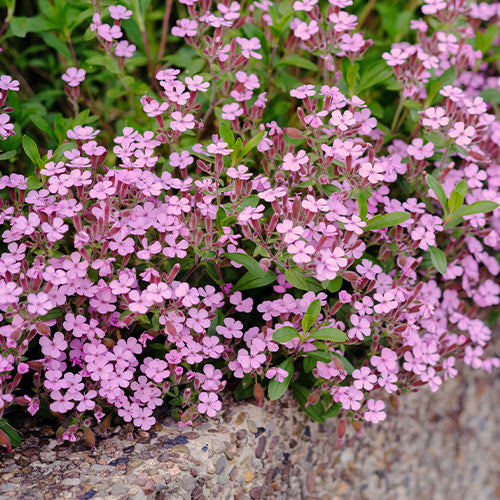
How To Grow Saponaria (Soapwort) From Seeds
Share
What is Saponaria?
Saponaria, commonly known as Soapwort, is a flowering plant that belongs to the Caryophyllaceae family. It is native to Europe and Asia and is known for its medicinal and cleansing properties. The plant gets its name from the soap-like qualities of its roots and leaves.
How to Grow Saponaria from Seeds?
If you're interested in growing Saponaria in your garden, here's a step-by-step guide:
- Start by preparing a well-draining soil mix in a pot or seed tray.
- Sow the Saponaria seeds on the soil surface and lightly cover them with a thin layer of soil.
- Water the seeds gently to keep the soil moist but not waterlogged.
- Place the pot or seed tray in a warm and sunny location, as Saponaria requires plenty of sunlight to germinate.
- Keep the soil consistently moist until the seeds germinate, which usually takes around 10-14 days.
- Once the seedlings have grown a few inches tall, you can transplant them into your garden or larger pots.
- Choose a location with well-draining soil and partial shade for planting.
- Water the plants regularly, especially during dry spells, to keep the soil evenly moist.
- Prune the plants after flowering to encourage bushier growth and remove any dead or damaged foliage.
Benefits of Saponaria (Soapwort)
Saponaria offers several benefits, making it a popular choice among gardeners:
- Natural Cleanser: The roots and leaves of Saponaria contain saponins, which have natural cleansing properties. They can be used to make gentle and eco-friendly soaps and shampoos.
- Attracts Wildlife: The flowers of Saponaria attract bees, butterflies, and other pollinators, making it a great addition to pollinator-friendly gardens.
- Medicinal Uses: Saponaria has been used in traditional medicine for its anti-inflammatory and expectorant properties. It is believed to help with respiratory conditions and skin irritations. However, it's essential to consult with a healthcare professional before incorporating Soapwort into your healthcare routine to ensure it's suitable for your specific needs and circumstances.
- Ornamental Value: With its clusters of pink or white flowers and attractive foliage, Saponaria adds beauty to any garden or landscape.
Tips for Growing Saponaria Successfully
Here are some tips to ensure successful growth of Saponaria:
- Well-Draining Soil: Saponaria prefers well-draining soil to prevent root rot. Adding organic matter can improve soil drainage.
- Sunlight: Place Saponaria in a location that receives at least 6 hours of direct sunlight daily for optimal growth and flowering.
- Watering: While Saponaria requires regular watering, avoid overwatering as it can lead to root rot. Water the plants when the top inch of soil feels dry.
- Deadheading: Remove faded flowers regularly to promote continuous blooming and prevent self-seeding.
- Dividing: Saponaria can be divided every few years to rejuvenate the plant and maintain its vigor.
In Conclusion
Saponaria, also known as Soapwort, is a versatile plant with numerous benefits. Whether you're interested in its cleansing properties, wildlife attraction, medicinal uses, or ornamental value, growing Saponaria from seeds can be a rewarding experience. By following the proper planting and care techniques, you can enjoy the beauty and benefits of this remarkable plant in your own garden.

